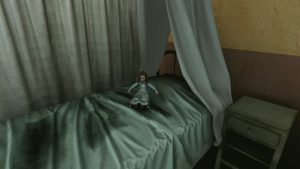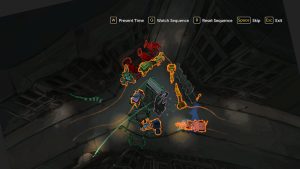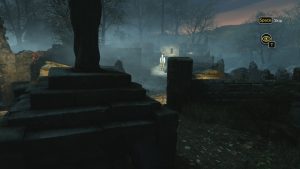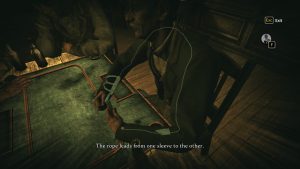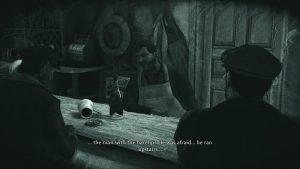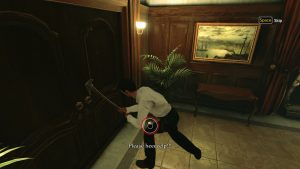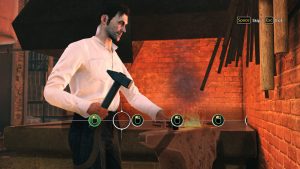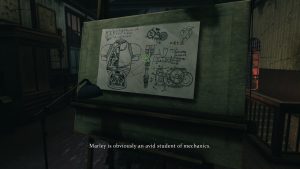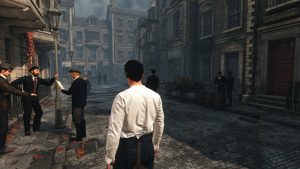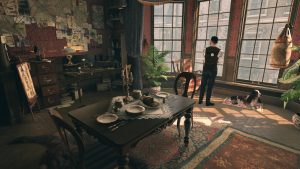- Sherlock Holmes: The Mystery of the Mummy
- Sherlock Holmes: Secret of the Silver Earring
- Sherlock Holmes: The Awakened (2006)
- Sherlock Holmes: Nemesis
- Frogwares’ Sherlock Holmes Casual Games
- Sherlock Holmes Versus Jack the Ripper
- Testament of Sherlock Holmes, The
- Sherlock Holmes: Crimes & Punishments
- Sherlock Holmes: The Devil’s Daughter
- Sherlock Holmes: Chapter One
- Sherlock Holmes: The Awakened (2023)
After several games based around the early TV versions of Sherlock Holmes, with a sprinkling of BBC Sherlock aesthetic spice, Frogwares changed things up a great deal in a sort of reboot in 2016, releasing The Devil’s Daughter as a more action focused entry. Holmes and Watson have notably changed their appearances to resemble Robert Downey Jr. and Judd Law’s takes on the characters from the 2009 blockbuster film, with their actors also being switched out again to match the shift. On top of that, more QTE action set pieces were worked into the game, creating a more loud and exciting experience overall.

There were some problems with this approach. Perhaps the biggest of them is that the main story of the game prevents it from being a proper reboot, due to the presence of Sherlock Holmes’ adopted daughter, Katelyn. If you have played this series, then you know this exact game is a very direct sequel to one of the previous, and you know exactly where the core mystery is headed. If you haven’t followed the series, then you’ll be failed to be hooked into that main story due to Katelyn being a fairly uninteresting character in herself.
The idea of Sherlock having to deal with a growing distance between him and his daughter, due partly due to how he got her in the first place, is a good idea, and it could only work with this more emotional take on the character. The issue is that Katelyn is barely present in the story, so it’s hard to buy Sherlock and her would have that close a relationship to begin with, deflating the core conflict. There’s nothing to Katelyn beyond the odd weird line, and this version of Sherlock doesn’t really work until the very end when it comes to expressing himself. Sherlock having anger issues is a very odd new trait to give him this late in the series.

This is further made weaker by the frankly terrible main villain, who’s motivation and ultimate plan is poorly thought through nonsense that hand waves any logic away with the mentally unstable card. Of all the things to take from the Sherlock TV series, why did it have to be Moriarty’s terrible characterization? The game often goes for shock value with the central villain instead of any sort of depth or complexity, and it never works, not once. It just makes the core of the game feel hollow and ultimately uninteresting, because the three main players don’t really work well against each other.
The game also suffers from this shift in focus not really landing until case three. The first case is solid, but has odd moments, like having an entire stealth and tailing sequence with Wiggins. It also has a final conclusion that is a complete shell shock to anyone just coming off Crimes & Punishments, with one of the dumbest, most ridiculous reveals in the entire franchise – and that includes the game about the eldrich cult. The fact your get a moral choice at the end feels like a joke, yet the game is completely serious. The main villain even brings up your moral choices at the end of the game, some of the easiest and dumbest you’ll find in any video game, having no bite in their judgment of you.

Case two is just bloated, especially with one very annoying environment puzzle with drawn out animations, and an infuriating bit where Sherlock imagines exploring a temple that has barely anything to do with the final resolution. It feels like a massive waste of time, made worse by the bizarre and overly campy ending of the case. It’s just extremely drawn out, and the wrap up is just so badly considered that it eaves a bad taste in the mouth. It feels like a huge waste of time, despite the bits it does do right.
The game reuses almost the entire structure of Crimes & Punishments, including making deductions, forming profiles, and the ending moral decisions, but none of it initially fits this new style at all. It all feels too dumb to really bother thinking too hard on, with the majority of the moral choices the game throws at you being almost insulting in that you have a choice at all. We’re right back to be blue and nice or red and screaming, the default of the video game moral choice system, and it sucks. All of this means the game can’t really form the new identity it needs too, and the new set piece focus feels intrusive and unwelcome. It feels like a dumber version of the last game instead of something that can stand by itself.

For a few hours, this felt like it would be the first proper bad entry in the franchise main canon. The graphics were notably toned down, with quite bad skin textures. The new UI elements, like simplified action points that list options on the sides instead of a scrolling list, didn’t register properly in the brain for awhile. The first major action set piece, a chase where Sherlock has to outrun a gunman in the woods, felt jerky and went on for a tad too long, removing the sense of urgency. The new Holmes and Watson also didn’t click well early on, making it hard to believe Sherlock was an experienced detective and adventurer.
Then, finally, case three hit, and things started to come together. The set pieces got more creative and fun. For example, instead of trying to imagine what happened at a crime scene, Sherlock would visualize a series of actions to perform in order to make a distraction and leave a room unnoticed, and then you got to see the chaos properly unfold. You could also do a disguise trick as usual, but then watch it grow into a ridiculous and hilarious fake exorcism as Sherlock directed his secret police with nonsense he’s making up on the fly.

The cases had less fat and more satisfying conclusions, with case four being a major stand out for a really inventive start, having to make sense of a series of human dominoes at an accident. It was also segmented better, having clear moments of investigation steps. After figuring out how the accident happened, you could then follow the steps of two victims to uncover something way bigger, then do proper interrogations, and it all lead to a satisfying conclusion that tied in well with Sherlock’s main conflict in the overall story.
The Devil’s Daughter is probably the weakest of the mainline entries, possibly more so than Nemesis and its mess of a middle chapter, but it does come together and sells its vision about the halfway point. The new Sherlock makes a lot more sense, an overly curious, mischievous troll that isn’t afraid to take chances and get into the thick of it. It gives Watson some more fun back and forth beyond being a perpetually confused straight man as well. It’s genuinely really funny his idea for a distraction while Holmes is entering a mansion is to knock over a vase with a sense of tired resignation, knowing he can’t stop his ridiculous friend. Even the QTE bits are fun, with lots of ridiculous spectacle.

It’s just a shame that it can’t really show its positives as much as it should. The core problem seems to be that Frogwares were trying out a lot of ideas, and with a limited development cycle, didn’t have time to make ideas properly mesh. This concept needed an entire new framing, a new core gameplay loop, but with deadlines on the way, the team did what needed to be done to get the game finish in a realistic time frame. This isn’t uncommon from their past output, but it’s far more noticeable in a high definition game. The issues stick out more than usual, and fixing them or making tweaks became a lot more complicated with the leap in fidelity and scale.
What we’re left with is an extremely uneven but ultimately good game, if on the average side. It needed more time to cook, and that time wasn’t possible to have. It can still be enjoyed for what it is, but for fans of the franchise, this is definitely one of the weaker links. The fact it released in the shadow of Crimes & Punishments, with its exact same mechanics in its structure, just makes Devil’s Daughter all the more disappointing. Not bad, just disappointing.
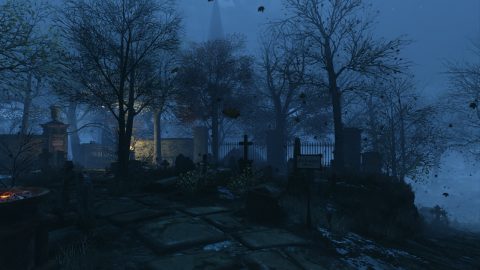
Before the next Sherlock Holmes game released, Frogwares spent some time trying out more ideas with to Lovecraft inspired projects. One was an abandoned Call of Cthulhu game some other devs finished later, ad the other was an original project built from work on that game called The Sinking City. That game would work in combat and RPG elements into the core adventure game structure, and that experience would inform the next mainline entry in their Sherlock Holmes series.
That game being an original prequel was one thing. The fact it was also an open world game with an involved combat system, however, put on a scale few would have ever expected.
















